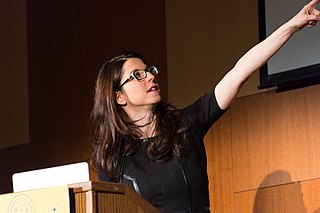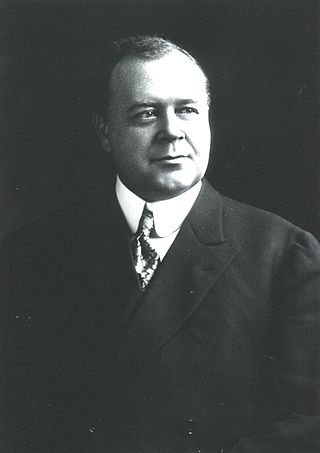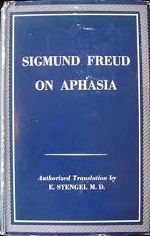Psychoanalysis is a set of theories and therapeutic techniques that deal in part with the unconscious mind, and which together form a method of treatment for mental disorders. The discipline was established in the early 1890s by Sigmund Freud, whose work stemmed partly from the clinical work of Josef Breuer and others. Freud developed and refined the theory and practice of psychoanalysis until his death in 1939. In an encyclopedia article, he identified the cornerstones of psychoanalysis as "the assumption that there are unconscious mental processes, the recognition of the theory of repression and resistance, the appreciation of the importance of sexuality and of the Oedipus complex." Freud's colleagues Alfred Adler and Carl Gustav Jung developed offshoots of psychoanalysis which they called individual psychology (Adler) and analytical psychology (Jung), although Freud himself wrote a number of criticisms of them and emphatically denied that they were forms of psychoanalysis. Psychoanalysis was later developed in different directions by neo-Freudian thinkers, such as Erich Fromm, Karen Horney, and Harry Stack Sullivan.

Sigmund Freud was an Austrian neurologist and the founder of psychoanalysis, a clinical method for evaluating and treating pathologies seen as originating from conflicts in the psyche, through dialogue between patient and psychoanalyst, and the distinctive theory of mind and human agency derived from it.
The unconscious mind consists of processes in the mind that occur automatically and are not available to introspection. Although these processes exist beneath the surface of conscious awareness, they are thought to exert an effect on conscious thought processes and behavior. Empirical evidence suggests that unconscious phenomena include repressed feelings and desires, memories, automatic skills, subliminal perceptions, and automatic reactions. The term was coined by the 18th-century German Romantic philosopher Friedrich Schelling and later introduced into English by the poet and essayist Samuel Taylor Coleridge.

Sándor Ferenczi was a Hungarian psychoanalyst, a key theorist of the psychoanalytic school and a close associate of Sigmund Freud.
Psychoanalytic theory is the theory of personality organization and the dynamics of personality development relating to the practice of psychoanalysis, a clinical method for treating psychopathology. First laid out by Sigmund Freud in the late 19th century, psychoanalytic theory has undergone many refinements since his work. The psychoanalytic theory came to full prominence in the last third of the twentieth century as part of the flow of critical discourse regarding psychological treatments after the 1960s, long after Freud's death in 1939. Freud had ceased his analysis of the brain and his physiological studies and shifted his focus to the study of the psyche, and on treatment using free association and the phenomena of transference. His study emphasized the recognition of childhood events that could influence the mental functioning of adults. His examination of the genetic and then the developmental aspects gave the psychoanalytic theory its characteristics. Starting with his publication of The Interpretation of Dreams in 1899, his theories began to gain prominence.

Abraham Arden Brill was an Austrian-born psychiatrist who spent almost his entire adult life in the United States. He was the first psychoanalyst to practice in the United States and the first translator of Sigmund Freud into English.

Heather A. Berlin is an American neuroscientist and licensed clinical psychologist noted for her work in science communication and science outreach. Her research focuses on brain-behavior relationships affecting the prevention and treatment of impulsive and compulsive psychiatric disorders. She is also interested in the neural basis of consciousness, dynamic unconscious processes, and creativity. Berlin is host of the PBS Nova series Your Brain, the PBS series Science Goes to the Movies, the Discovery Channel series Superhuman Showdown, and StarTalk All-Stars with Neil DeGrasse Tyson.

Smith Ely Jelliffe was an American neurologist, psychiatrist, and psychoanalyst. He lived and practiced in New York City nearly his entire life. Originally trained in botany and pharmacy, Jelliffe switched first to neurology in the mid-1890s then to psychiatry, neuropsychiatry, and ultimately to psychoanalysis.
Neuropsychoanalysis integrates both neuroscience and psychoanalysis, to create a balanced and equal study of the human mind. This overarching approach began as advances in neuroscience lead to breakthroughs which held pertinent information for the field of psychoanalysis. Despite advantages for these fields to interconnect, there is some concern that too much emphasis on neurobiological physiology of the brain will undermine the importance of dialogue and exploration that is foundational to the field of psychoanalysis. Critics will also point to the qualitative and subjective nature of the field of psychoanalysis, claiming it cannot be fully reconciled with the quantitative and objective nature of neuroscientific research. However, despite this critique, proponents of the field of neuropsychoanalysis remind critics that the father of psychoanalysis, Sigmund Freud himself, began his career as a neuroanatomist, further arguing that research in this category proves that the psychodynamic effects of the mind are inextricably linked to neural activity in the brain. Indeed, neuroscientific progress has created a shared study of many of the same cognitive phenomenon, and proponents for a distinct field under the heading of neuropsychoanalysis point to the ability for observation of both the subjective mind and empirical evidence in neurobiology to provide greater understanding and greater curative methods. Therefore, neurospsychoanalysis aims to bring a field, often viewed as belonging more to the humanities than the sciences, into the scientific realm and under the umbrella of neuroscience, distinct from psychoanalysis, and yet adding to the plethora of insight garnered from it.
According to some music therapists, the use of Music in the therapeutic environment has an affinity with psychoanalysis in that it addresses obstructions in the mind that might be causing stress, psychic tension, and even physical illness. Music has been used, in conjunction with a psychoanalytic approach, to address symptoms of a variety of mental disorders, as well as forms of emotional distress, such as grief, loss, mourning, and trauma.
In psychoanalytic theory, the term psychic apparatus refers to the mental structures and mechanisms of the psyche. In Freud's 'topographical' model of the psyche, it refers to three systems – the Unconscious, the Pre-conscious, and the Conscious. In his later 'structural model', Freud described the psychic apparatus in terms of the id, ego and super-ego.
Metapsychology is that aspect of any psychological theory which refers to the structure of the theory itself rather than to the entity it describes. The psychology is about the psyche; the metapsychology is about the psychology. The term is used mostly in discourse about psychoanalysis, the psychology developed by Sigmund Freud, which was at its time regarded as a branch of science, or, more recently, as a hermeneutics of understanding. Interest on the possible scientific status of psychoanalysis has been renewed in the emerging discipline of neuropsychoanalysis, whose major exemplar is Mark Solms. The hermeneutic vision of psychoanalysis is the focus of influential works by Donna Orange.

Louis Breger was an American psychologist, psychotherapist and scholar. He was Emeritus Professor of Psychoanalytic Studies at the California Institute of Technology
Peter J. Loewenberg is an American historian and psychoanalyst, professor of “European cultural, intellectual, German, Austrian and Swiss history, political Psychology, integrating the identities of an historian and political psychologist with the clinical practice of psychoanalysis” at UCLA.
Norman Doidge,, is a psychiatrist, psychoanalyst, and author of The Brain that Changes Itself and The Brain's Way of Healing.

Wish fulfillment is the satisfaction of a desire through an involuntary thought process. It can occur in dreams or in daydreams, in the symptoms of neurosis, or in the hallucinations of psychosis. This satisfaction is often indirect and requires interpretation to recognize.
Erika Fromm was a German-American psychologist and co-founder of hypnoanalysis.
Jon Mills is a Canadian philosopher, psychoanalyst, and clinical psychologist. His principle theoretical contributions have been in the philosophy of the unconscious, a critique of psychoanalysis, philosophical psychology, value inquiry, and the philosophy of culture. His clinical contributions are in the areas of attachment pathology, trauma, psychosis, and psychic structure.

On Aphasia is a work on aphasia by Sigmund Freud, the founder of psychoanalysis. The monograph was Freud's first book, published in 1891. In the treatise, Freud challenges the main authorities of the time by asserting that their manner of understanding aphasias was no longer tenable. At the turn of the century, neuroscientists had attempted to localize psychological processes in discrete cortical regions—a position which Freud rejected because neuroscience had very little to offer dynamic psychology on the topic.

Aikaterini Fotopoulou is a psychologist and cognitive neuroscientist who is a professor at the University College London Research Department of Clinical, Educational and Health Psychology. She is the co-founder and current board member of the International Association for the Study of Affective Touch and the European Cognitive and Affective Neuroscience Society, a Fellow of the Association for Psychological Sciences and past co-chair of its International Convention, and the current President of the Psychology Section of the British Science Association. Fotopoulou was the past Director of the London Neuropsychoanalysis Centre, Secretary of the International Neuropsychoanalysis Society and coordinator of the London Neuropsychoanalysis Group.








